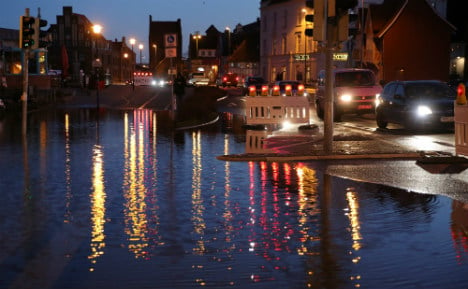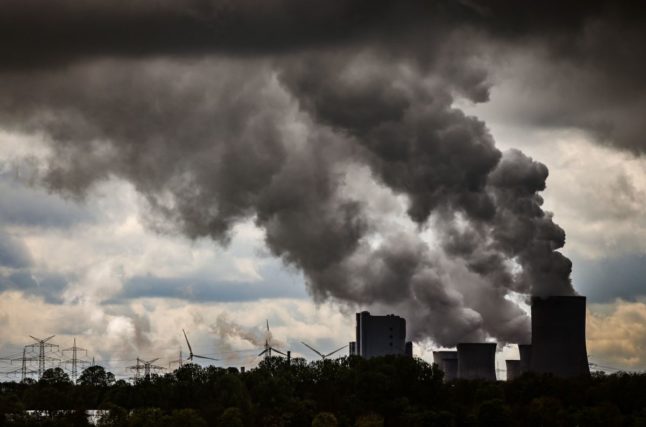The unseasonably warm weather of last week, which saw a high of 22 degrees Celsius in Rosenheim, Bavaria on November 21st, came to an end over the weekend.
Although there was no new snow, temperatures dropped into single digits, ushering in heavy frosts.
The DWD (German Weather Service) correctly predicted the temperatures as “glühweintauglich” (mulled-wine-appropriate), conveniently coinciding with the first weekends of many Christmas markets across Germany.
Sunday also saw swathes of mist descending throughout the country. One Instagram user captured the New Town Hall in Hannover, shrouded in the mist.
Instagram user Lars Hoffmann also snapped this misty shot of Bärenstein Castle in the East Ore Mountains (Osterzgebirge) in Saxony on Sunday.
Whilst in Bavaria, this photographer captured the light on the Bavarian Alps near Allgäu.
The cold spell continued into the new week, and Federico Gambarini photographed these two walkers in the frost near Cologne on Monday morning.
 Photo: DPA
Photo: DPA
The subzero morning temperatures saw a frost across the country, here crystallising a leaf in a courtyard in the town of Sehnde, Lower Saxony.
 Photo: DPA
Photo: DPA
p.p1 {margin: 0.0px 0.0px 0.0px 0.0px; font: 12.0px ‘Helvetica Neue’; color: #454545}
Federico Gambarini also took advantage of the morning frost, capturing this frosted leaf and berry.
 Photo: DPA
Photo: DPA
silvio2706 got out early to shoot the morning sunrise near Meiningen in Thuringia.
p.p1 {margin: 0.0px 0.0px 0.0px 0.0px; font: 12.0px ‘Helvetica Neue’; color: #454545}
In the Alfter district of North Rhine-Westphalia, a few kilometres west of Bonn, people woke instead on Monday morning to a heavy mist and frost, captured here by Instagram user fuerstinsabine.
It was not crisp and dry in all of Germany, however. In Wismar, on the Baltic coast in Mecklenburg-Western Pomerania, strong winds caused floods, resulting in this junction being submerged in the harbour town.
 Photo: DPA
Photo: DPA
p.p1 {margin: 0.0px 0.0px 0.0px 0.0px; font: 12.0px ‘Helvetica Neue’; color: #454545}
The colder weather is set to continue through to the end of November.




 Please whitelist us to continue reading.
Please whitelist us to continue reading.
Member comments